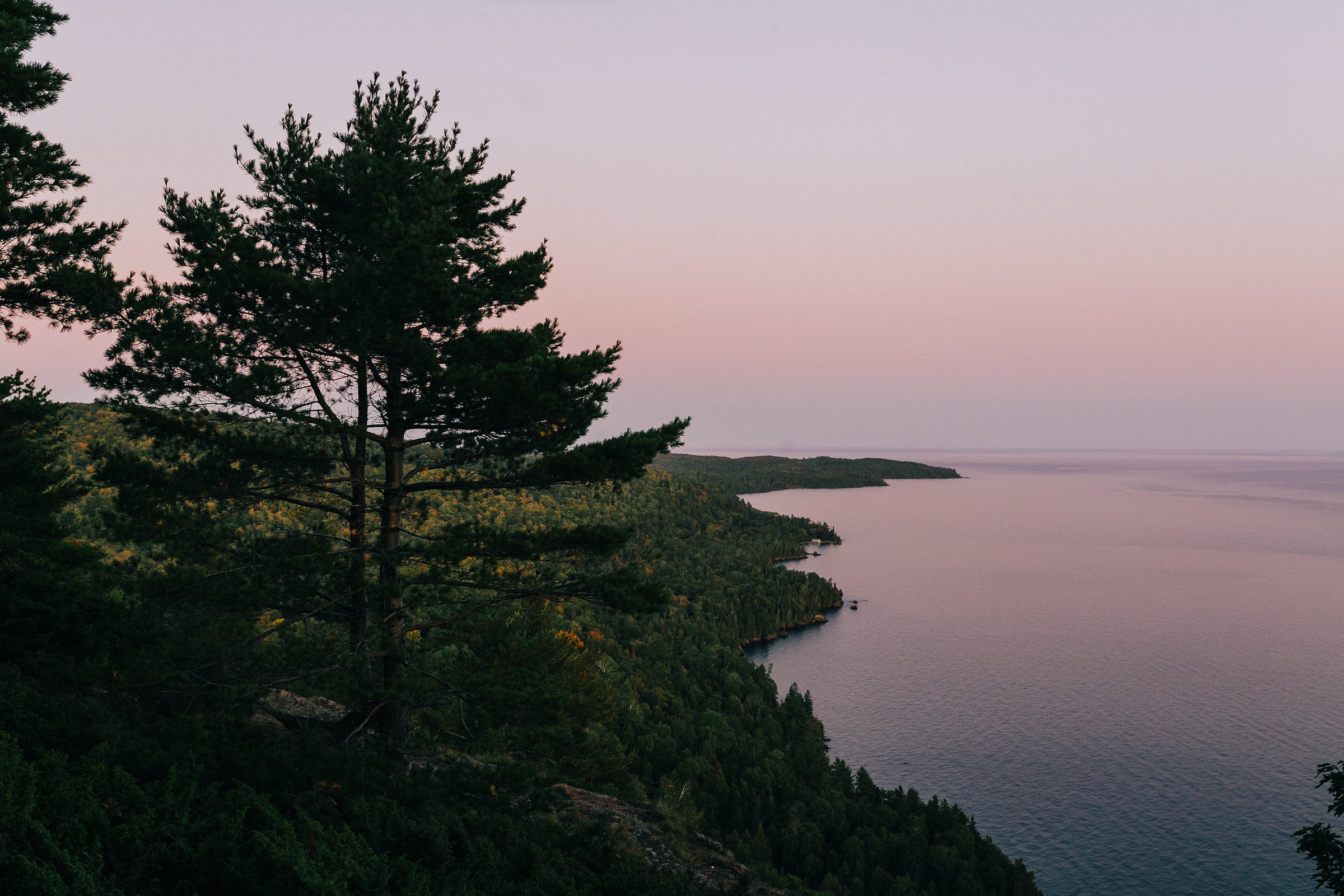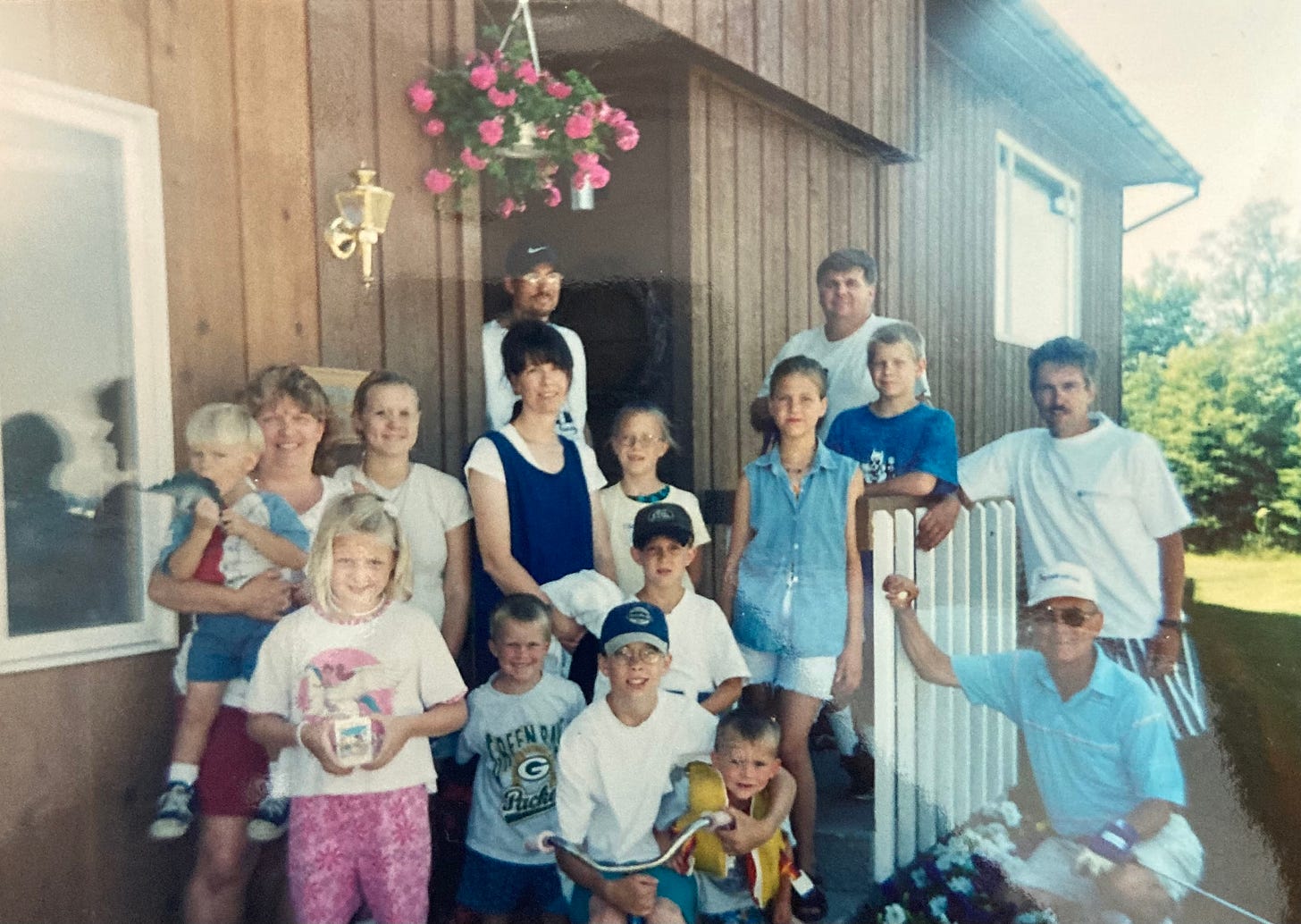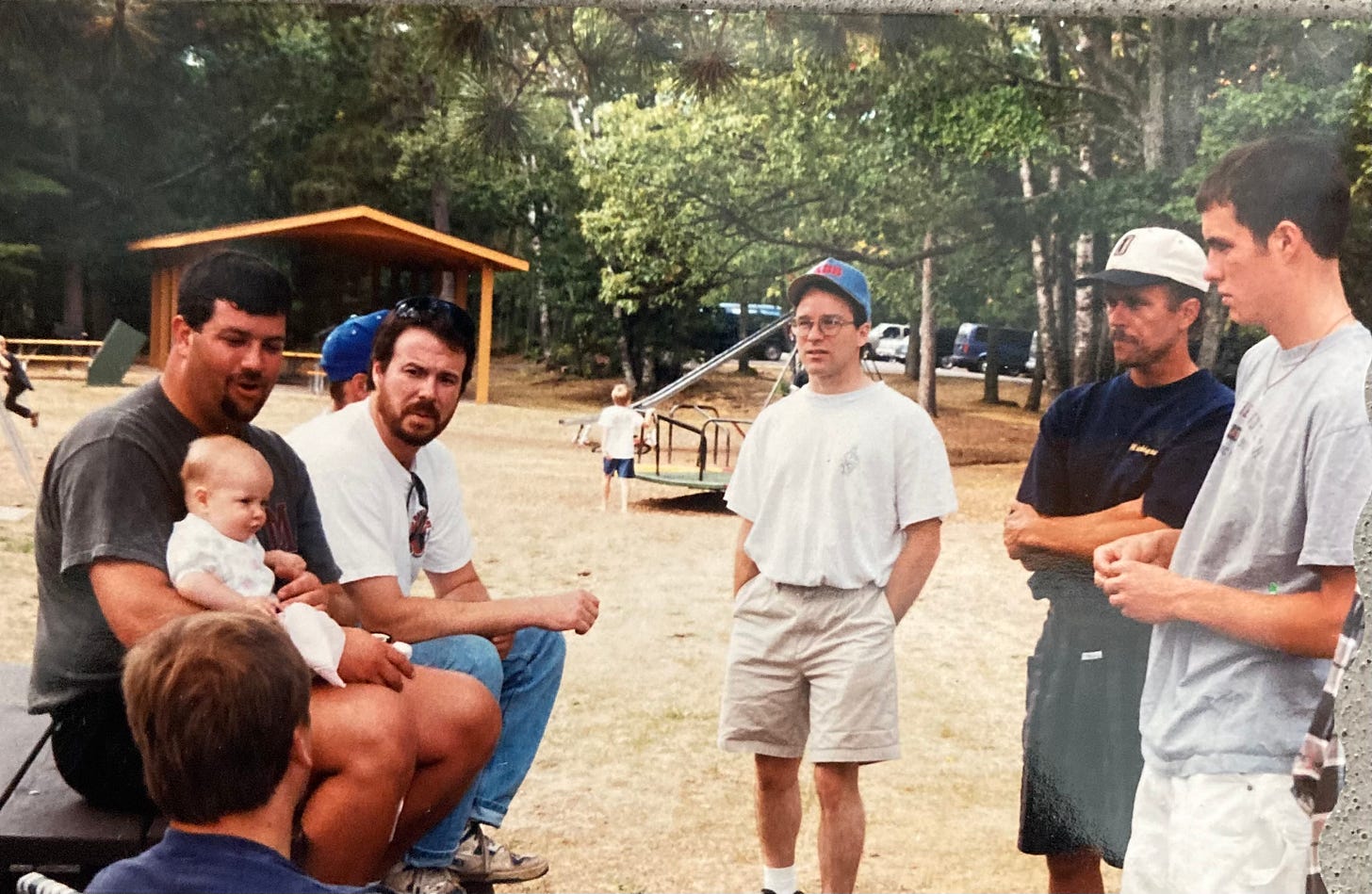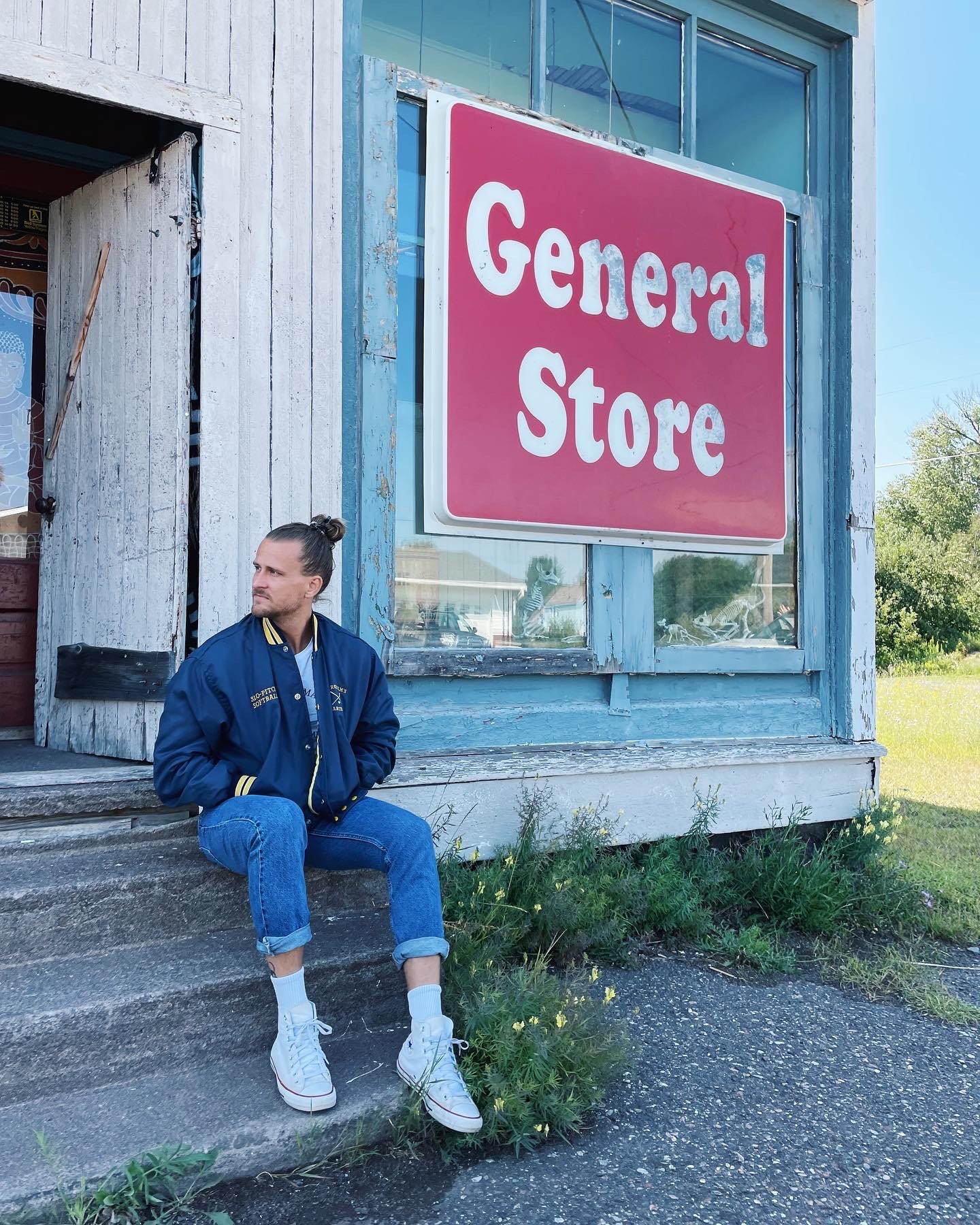
Our house was on a tree-lined country lane ten minutes outside a tiny single-main-street town. I always say it was kind of like growing up in the 1950s because we were surrounded by forest, it was pre-internet, and we didn’t have cable television, only a microwave-sized bubble TV connected to an antenna my father rigged on the roof that somehow got us one channel: ABC. So, in those chilly autumn months after school growing up, we could gather around and watch Wheel of Fortune, Jeopardy, and Seinfeld reruns. We even caught the first season of Lost and early Grey's Anatomy.
But the bus home from school took an hour. It wound ten minutes down each and every lumpy gravel road to stop at one house, turn around, and head back where we came from. There was no such thing as suburban sprawl, and many homes lay down their own country roads, miles from each other.
To this day, the smell of diesel fuel takes me right back to those brown seats, my skin sticking to the plastic as my sleepy head rattled against the window, snapping up when we hit a particularly large pothole, or in the winter watching kids frantically scratch the thick layer of frost on the glass, gather ice under their fingernails, and then stick all five fingers in their mouths to suck the dirty moisture.
About twenty minutes before the bus dropped us off, it turned onto a dirt cutoff that connected the paved Lake Annie and Pontiac Roads.
A large portion of the remaining students would scamper out because a family on that street had fifteen children
Yet one more way, it was like growing up in the 1950s.
And they weren’t the only family that big.
So, while most people I’ve met when traveling are blown away and perplexed when I tell them I have eighteen uncles, saying that where I’m from doesn’t illicit much of a reaction at all.
My mother’s family had thirteen children and my father had seven brothers and sisters, which, if you’re doing the math, means there’s technically a nineteenth uncle, but that’s a story for a later date.
Of course, religion and religious norms around birth control and community are the main reason I have a family the size of a small school system, but the place is also a factor.
Rural communities aren’t exactly known for embracing change, early adoption of anything, or fast-paced lifestyles. They’re isolated, usually conservative by nature, and feel delayed, muted effects of economic swings.
The booms rise almost imperceivably to the eye; the crashes slowly drain out the wealth and people like an hourglass losing minutes.
Michigan’s Upper Peninsula is no different.
The northwest corner of the UP, where I’m from, is yet another smaller peninsula, a peninsula on the Upper Peninsula, called the Keweenaw.
The Keweenaw is also known as “The Copper Country,” named after the late nineteenth-century economic boom that brought an influx of mining companies, and during the second half of that century and into the early twentieth, it was the world’s number one producer of copper, pulling more wealth and making a larger economic impact than the California Gold Rush.
The former rich mining region is now a smattering of villages one hundred years past their prime with a Rust Belt energy permeating the area. Century-old stone ruins from company buildings crumble and decay on the side of the road, and rusted steam hoists that used to lower large boxcars of miners down shafts still stand, the oxidized carcasses of a once vibrant and well-funded Industrial Revolution.
The economic frenzy needed laborers, and immigrants from Sweden, Norway, Denmark, Italy, England, and Finland came in droves.
That’s why the Cornish pasty is the unofficial dish of the entire peninsula, and also why the Finnish Apostolic community I grew up in established congregations in the Keweenaw.
These days, looking past boarded-up windows, general neglect, newer strip malls, and fast food chains, the downtowns of many villages still reveal the riches that once were.
Magnificent red sandstone buildings line the streets, churches with ornate steeples still elegantly reach above the two-story structures that dominate, and some historic sites have gotten the preservation and facelift they deserve.
But one eternal truth about time is that it’s pulling everything forward and tearing things down.
Nothing is immune. A house boarded up and abandoned for a decade ages a bit every day until someone returns, each end table, dresser, and picture frame visibly ten years older, dried out, brittle, and sagging under a hefty, blanketing layer of dust. Nobody touched any of it but Time.
That’s Rust Belt America, dried out, brittle, and sagging under forty years of neglect.
The Keweenaw mines closed, buildings crumbled, the economy of most villages stagnated, populations shifted, and tourism, the universities, and logging largely kept the area afloat.
However, what makes Upper Michigan stand out from other Rust Belt states is its remoteness, but much more importantly, the steady, grounding, and magnificent shores of Lake Superior.
In that seclusion, one can find a religious pocket that has kept their traditions, beliefs, and values, isolated in an ever-fading hamlet of ridiculously beautiful nature and virgin beaches in a nation of parking lots, strip malls, and high-rise condos.
And that’s why I knew multiple families with fifteen children.
That’s why the school bus still bounces along those same dirt lanes to this day.
It’s also why I have 18 Uncles.










I love that this blog came out while I'm here! I was just talking to Peachy about when Calumet became frozen in time: he said 1968 is when the mines closed. And I know who that mysterious 19th uncle is. ;) See you later!
Thank you Mitchell🙏I just realised that reading this here in Finland I’m having a glimpse to micro level Finnish history.